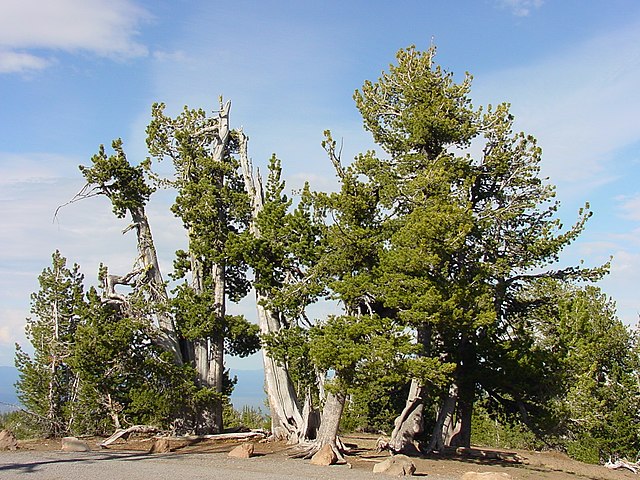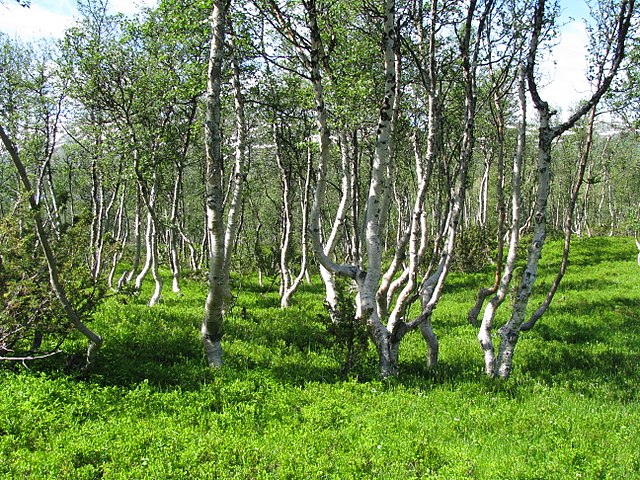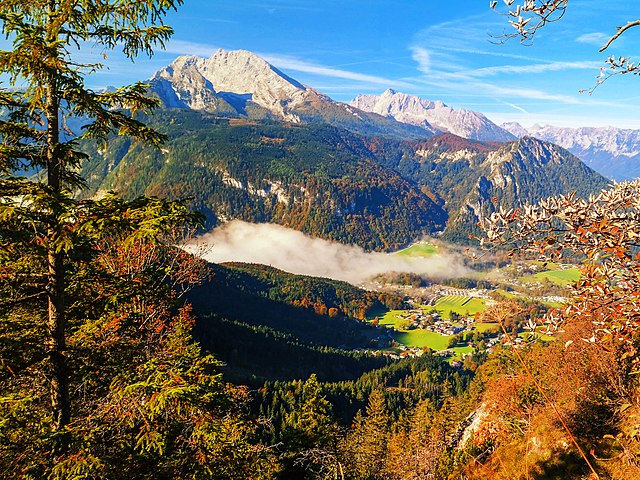Pinus albicaulis, known by the common names whitebark pine, white bark pine, white pine, pitch pine, scrub pine, and creeping pine, is a conifer tree native to the mountains of the western United States and Canada, specifically subalpine areas of the Sierra Nevada, Cascade Range, Pacific Coast Ranges, and Rocky Mountains. It shares the common name "creeping pine" with several other plants.
Pinus albicaulis
Pinus albicaulis is the only type of tree on the summit of Pywiack Dome in Yosemite National Park
Pinus albicaulis leaves are in fascicles (bundles) of five, and the cone is dark purple when immature (Mount Rainier National Park)
The whitebark pine, Pinus albicaulis, at Mount Rainier National Park
Montane ecosystems are found on the slopes of mountains. The alpine climate in these regions strongly affects the ecosystem because temperatures fall as elevation increases, causing the ecosystem to stratify. This stratification is a crucial factor in shaping plant community, biodiversity, metabolic processes and ecosystem dynamics for montane ecosystems. Dense montane forests are common at moderate elevations, due to moderate temperatures and high rainfall. At higher elevations, the climate is harsher, with lower temperatures and higher winds, preventing the growth of trees and causing the plant community to transition to montane grasslands and shrublands or alpine tundra. Due to the unique climate conditions of montane ecosystems, they contain increased numbers of endemic species. Montane ecosystems also exhibit variation in ecosystem services, which include carbon storage and water supply.
A subalpine lake in the Cascade Range, Washington, United States
A stand of mountain birch at around 750 m in Trollheimen, typical of Scandinavian subalpine forests
Waimea Canyon, Hawaii, is known for its montane vegetation.
Temperate montane forest in Bavaria, Germany








